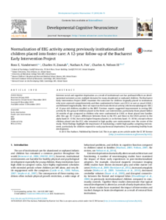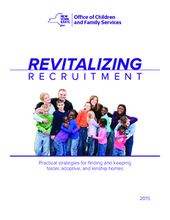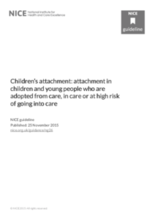Displaying 1721 - 1730 of 2214
This report is an analysis of the overall findings from the research project on Haitian child domestic workers.
This systematic review evaluated the effect of kinship care placement compared to foster care placement on the safety, permanency, and well-being of children removed from the home for maltreatment.
The purpose of this study is to examine the experiences and outcomes of children in the foster care system in the United States who were removed from their homes at least partially in relation to their parent's or caretaker's disability.
A press release from the Ministry of Women and Child Development, Government of India recapped a series of new initiatives by the Ministry during 2015. The achievements relevant to children’s care are briefly described below and include the launch of the flagship programme Beti Bachao Beto Padhao for protection of the girl child; several initiatives to track, restore, and rehabilitate missing children; and adoption reforms and a new foster care system.
This systematic review identified research studies examining factors associated with service use among kinship caregivers in the US using key search terms in five computerized bibliographic databases and four journals.
The Bucharest Early Intervention Project (BEIP) examined the outcomes for children who were originally placed in institutions; these children were randomized into two groups and followed longitudinally, with some being moved into foster care and others remaining in institutional care. This study reports on the brain electrical activity (electroencephalogram, or “EEG”) of 12-year-old children in this study, in order to examine the impact of movement to foster care after early psychological deprivation as a result of institutionalization.
According to the advocacy organization, First Focus, the U.S. Senate Finance Committee is planning to consider new legislation known as the Family First Act in January 2016. The legislation would direct investments at keeping children safe and supported at home and in family-like settings.
This guide, published by the New York State Office of Children and Family Services, provides a summary of promising practices currently used in recruitment and retention of foster/adoptive families.
This TedX presentation features Greta Munns, a youth empowerment advocate who was placed in foster care at age fifteen. Her “story” is what prompted her exploration of the foster care system.
This guideline covers the identification, assessment and treatment of attachment difficulties in children and young people up to age 18 who are adopted from care, in special guardianship, looked after by local authorities in foster homes (including kinship foster care), residential settings and other accommodation, or on the edge of care.



